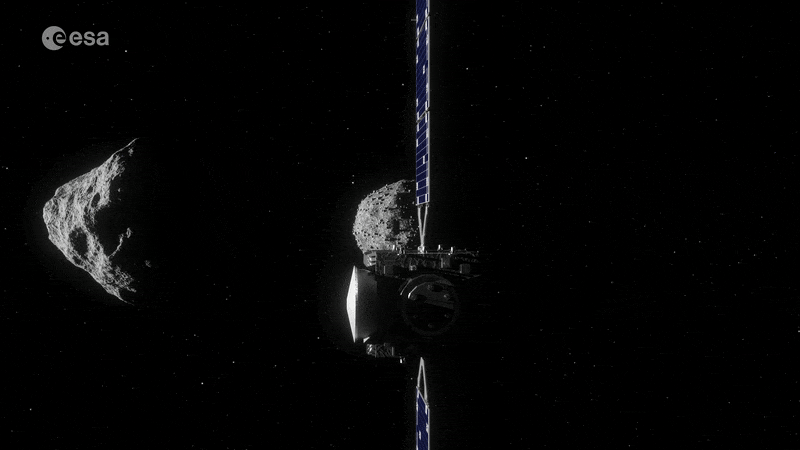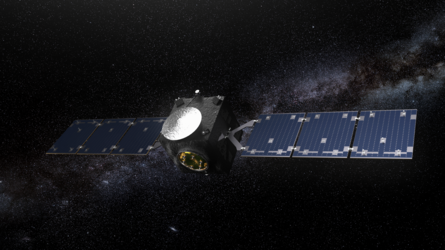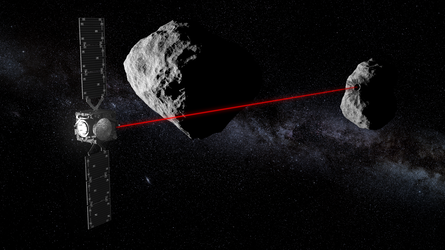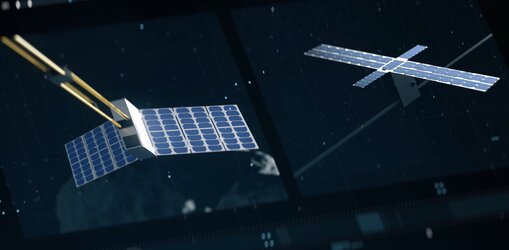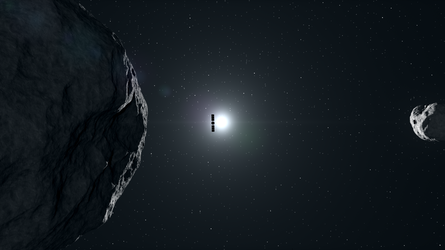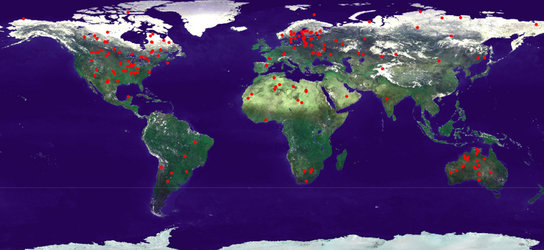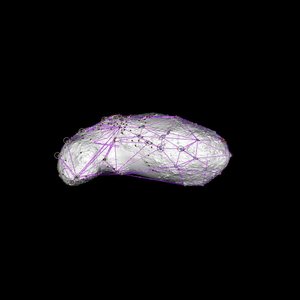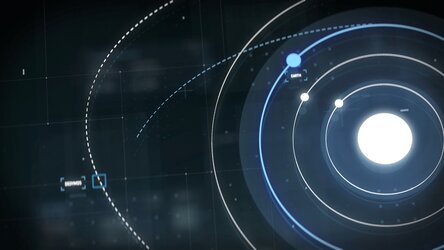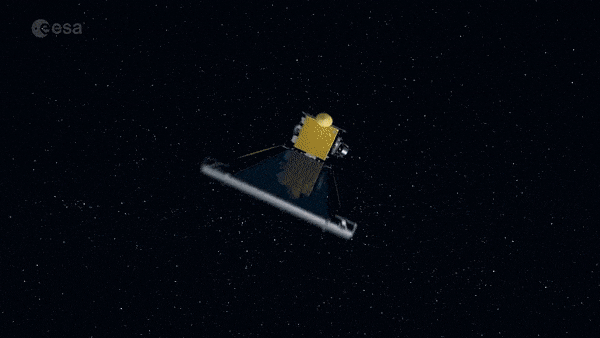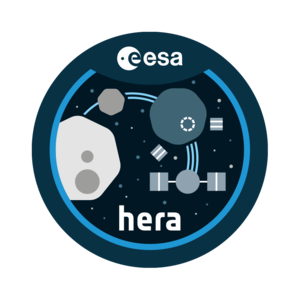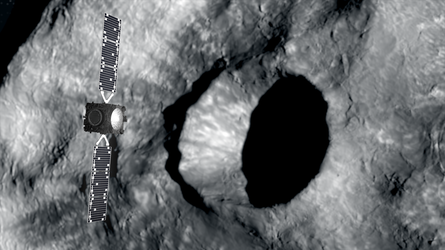Hera
Hera – named after the Greek goddess of marriage – will be, along with NASA's DART spacecraft, humankind’s first probe to rendezvous with a binary asteroid system, a little understood class making up around 15% of all known asteroids.
Hera is the European contribution to an international double-spacecraft collaboration. Now that NASA has performed a kinetic impact on the smaller of the two bodies, then Hera will follow-up with a detailed post-impact survey that will turn this grand-scale experiment into a well-understood and repeatable planetary defence technique.
While doing so, Hera will also demonstrate multiple novel technologies, such as autonomous navigation around the asteroid – like modern driverless cars on Earth, and gather crucial scientific data, to help scientists and future mission planners better understand asteroid compositions and structures.
Due to launch in 2024, Hera would travel to a binary asteroid system – the Didymos pair of near-Earth asteroids. The 780 m-diameter mountain-sized main body is orbited by a 160 m moon, formally christened 'Dimorphos' in June 2020, about the same size as the Great Pyramid of Giza.
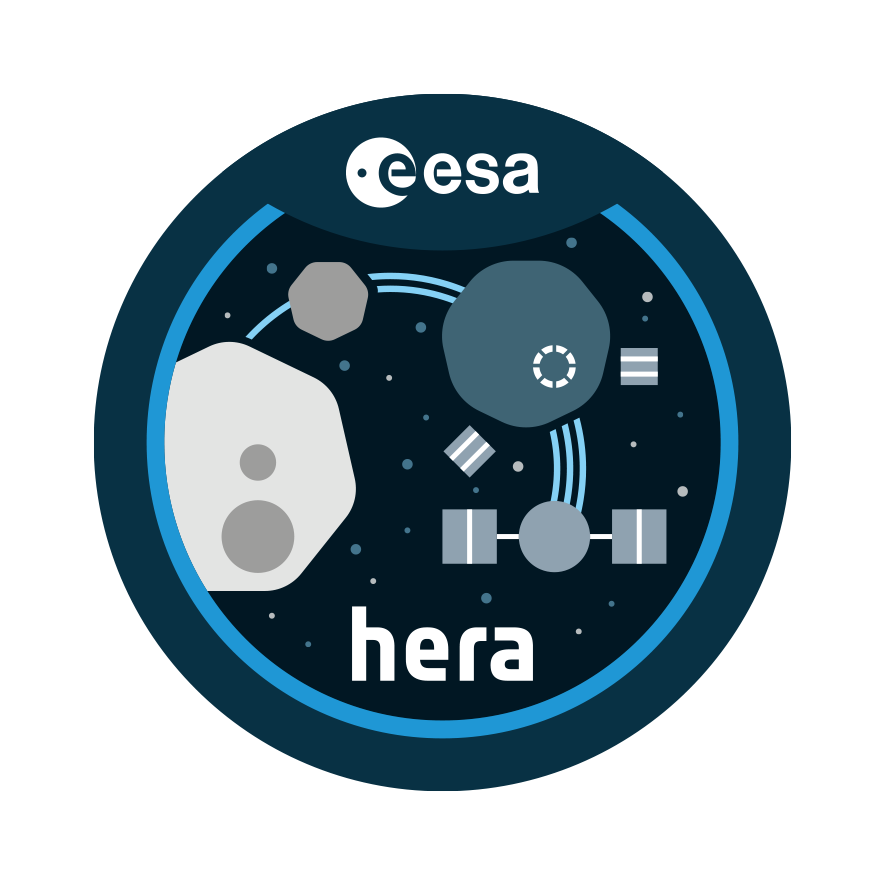
This smaller body is Hera’s focus: the spacecraft would perform high-resolution visual, laser and radio science mapping of the moon, which will be the smallest asteroid visited so far, to build detailed maps of its surface and interior structure.
Dimorphos has already achieved historic significance: the first object in the Solar System to have its orbit shifted by human effort in a measurable way.
The NASA mission called the Double Asteroid Redirection Test, or DART, collided with Dimorphos on 26 September 2022.

Prior to DART’s impact, it took Dimorphos 11 hours and 55 minutes to orbit its larger parent asteroid, Didymos. The spacecraft’s impact altered Dimorphos’ orbit around Didymos by 32 minutes, shortening its orbit to 11 hours and 23 minutes. This measurement has a margin of uncertainty of approximately plus or minus two minutes.
But ground observatories' measurements of Dimorphos’s altered orbit are estimated to be stuck with a 10% residual uncertainty and models of the impact are still missing some vital pieces of information: the mass of Dimorphos and its crater shape.
By actually venturing to Dimorphos, measuring its mass as well as its shifted orbit from up close and performing its own ‘crash scene investigation’ of the asteroid moon’s impact crater and surrounding surface in great detail, Hera will sharpen our understanding of this grand-scale space experiment. Its data will allow, for the first time, the validation or refinement of numerical models of the impact process at asteroid scale, rendering this deflection technique for planetary defence ready for operational use if ever needed to safeguard our home world, Earth.
DART and Hera were conceived together as part of the international ‘Asteroid Impact Deflection Assessment’ collaboration. The two missions are valuable individually, but by being flown in concert their overall scientific and technological return has been significantly boosted. They will contribute to the important and positive message that international cooperation is key for the achievement of a planetary defence initiative.
Hera, a further optimisation of ESA’s earlier Asteroid Impact Mission, was agreed for launch at the Agency’s Space19+ Council of Ministers at European Level in November 2019.


